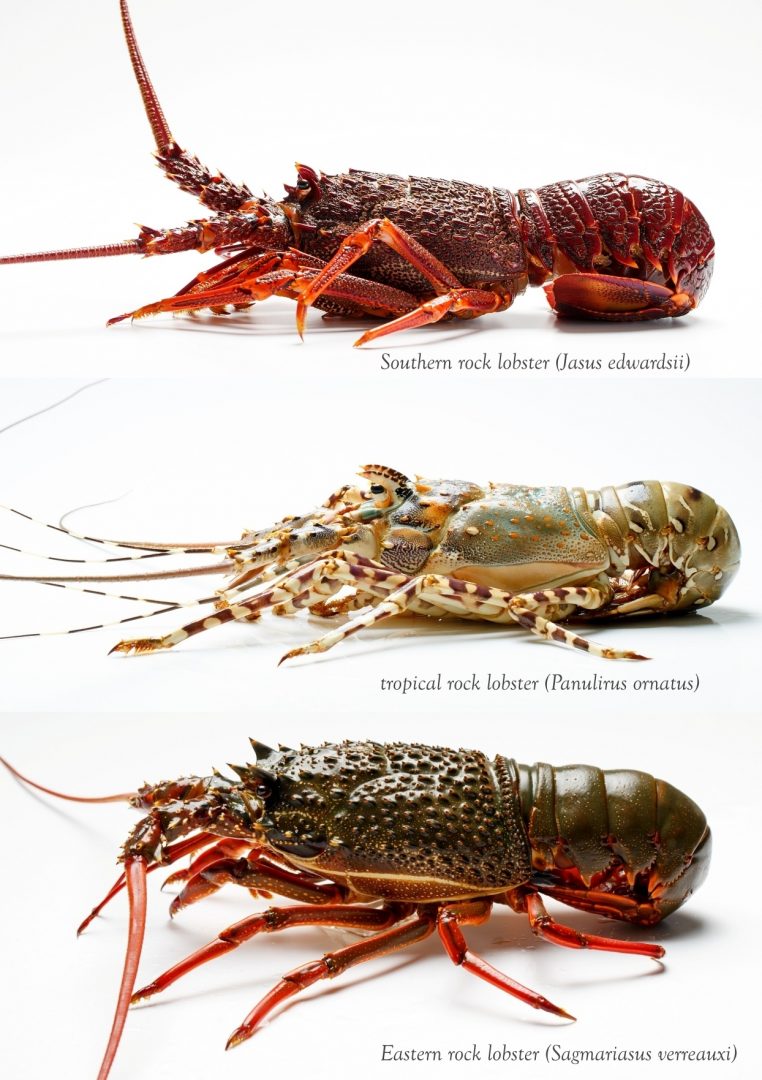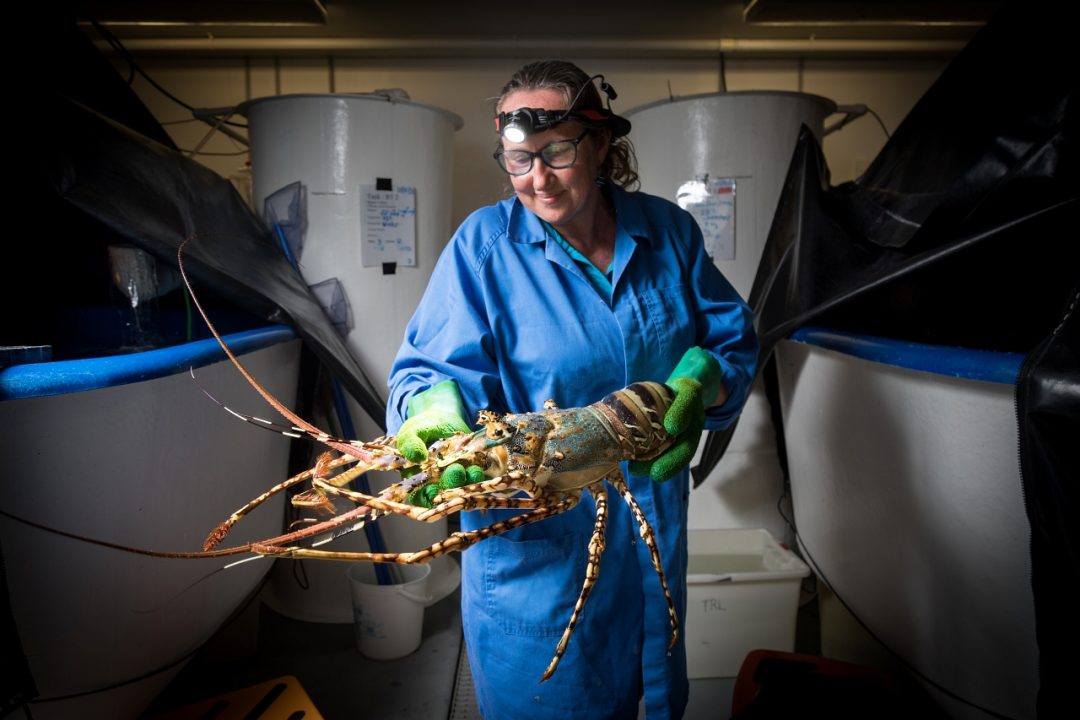You may be surprised to know that our Tasmania-based Research Hub works with tropical lobster species and not temperate (colder water/Southern) species. Here, we sit down with Senior Technical Officers, Molly Stokes and Larnie Linton to learn some fascinating facts about three different lobster species and why tropicals are best suited for onshore aquaculture.

Tasmania has two native species of lobster, the Eastern rock lobster (Sagmariasus verreauxi) and well loved Southern rock lobster (Jasus edwardsii). Both of which the Research Hub chief investigators have worked on in the past. Although Tasmanians, and people across the globe, love catching and eating local species, it turns out they aren't well suited for onshore aquaculture.
"The Tasmanian species are adapted to colder water, around 20ᵒC for the Southerns and 26ᵒC for the Easterns, which along with their long larval life history, means they are slow growing. The longer it takes to grow a lobster, the more money it costs to grow it to plate size", says Molly. "The tropical rock lobster (Panulirus ornatus) prefers its home to be around 28ᵒC or higher and is faster growing."
Larnie Linton has been working in aquaculture of tropical rock lobsters for over 20 years and has made some remarkable observations on the broodstock (reproductive adults). "One of my favourite discoveries has been that the tropical lobsters have unique markings on and between the horns above their eyes. It is just like a finger print. We can now use a 'cheat sheet' to identify individuals, which makes it easier for me to tag them correctly and shorten their handling time out of water."

Eastern Rock Lobsters
Southern Rock Lobsters
Tropical Rock Lobsters